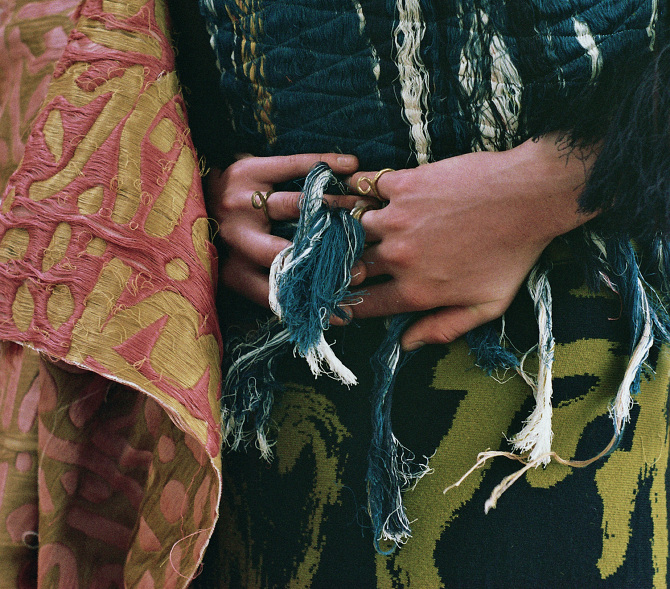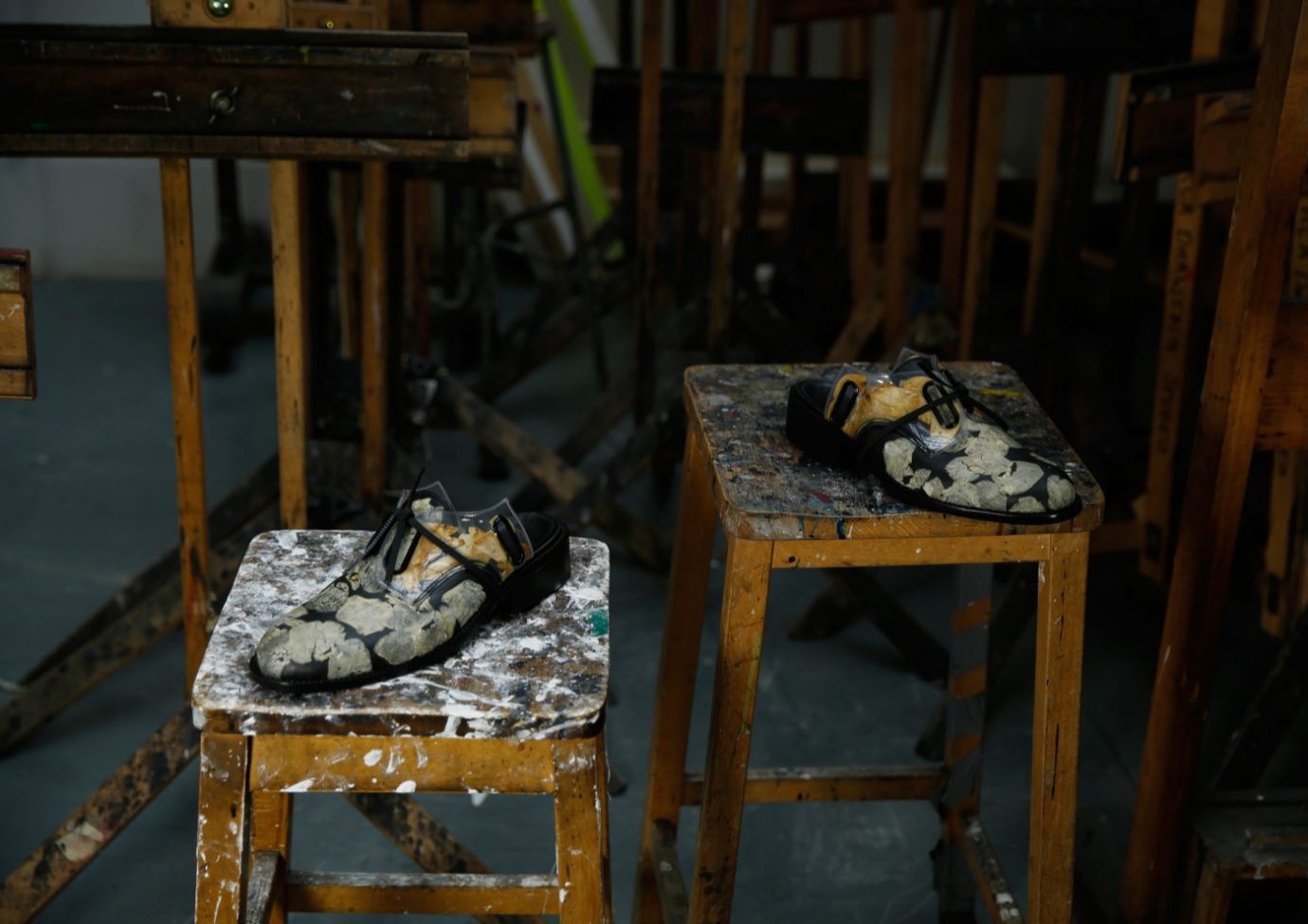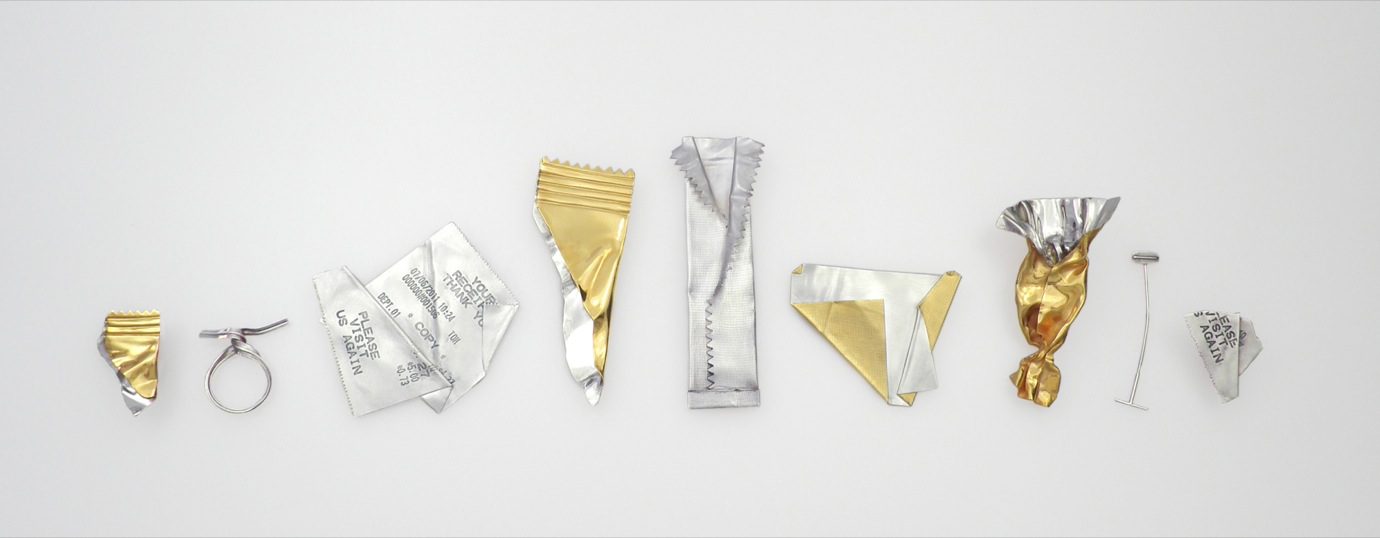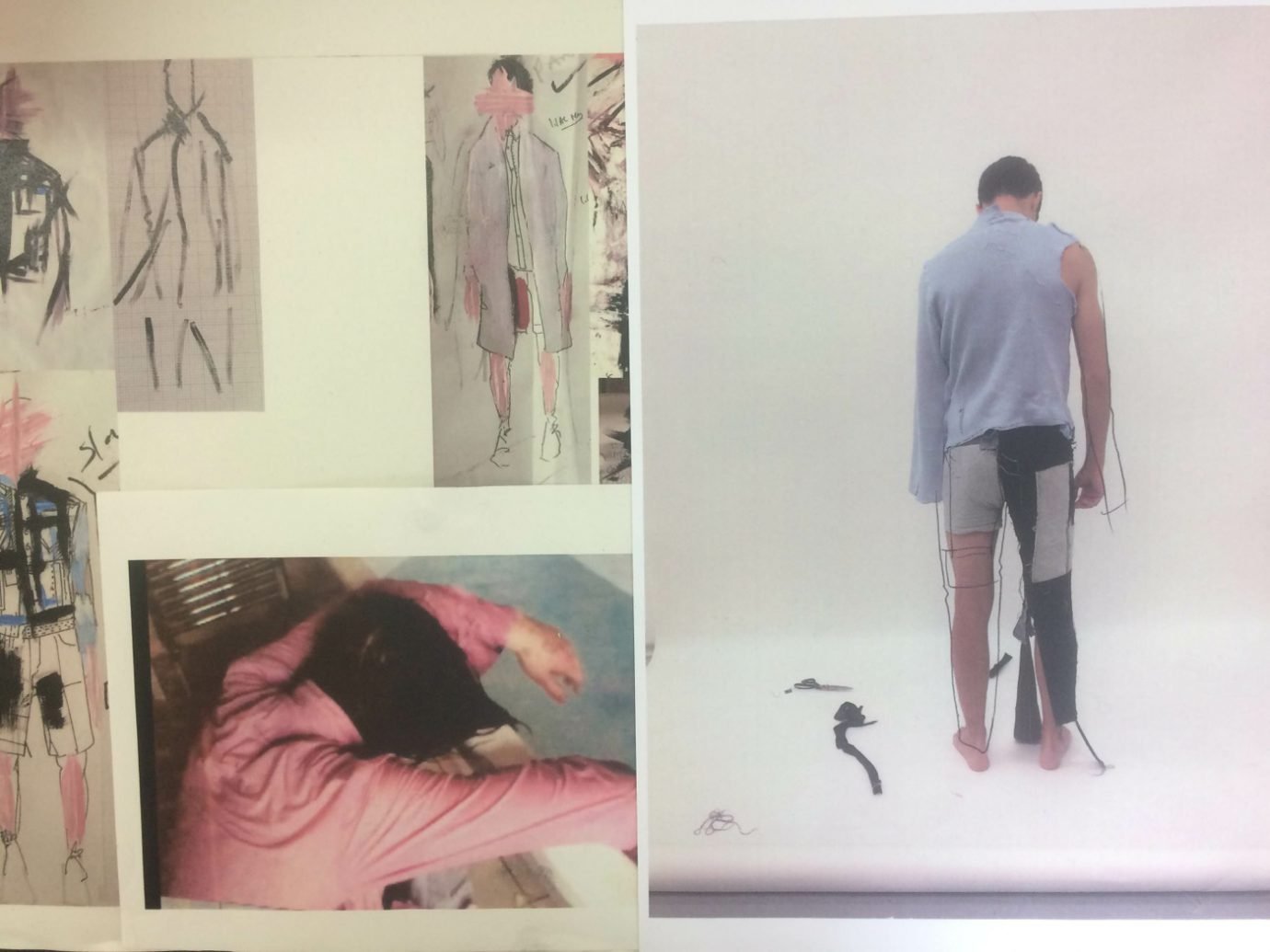Fashion is a practice that heavily relies on aesthetics, but there is a dichotomy to it. Imagine a runway, full of skinny, tall women. They wear the most beautiful creations, from plisse fabrics to artistic trompe l’oeil designs. When you picturesomeone who is plus-size, or physically disabled, walking a runway, you might notice that the clothes they are wearing look different, almost like a watered-down version of what regular-sized bodies are presenting. When it comes to creating for bodies that fit into the norm, everything seems possible – when we decide to create bodies out of that range, the possibilities seem limited.
Finding inclusivity in embroidery with Angelica Ellis
Why are young designers staying away from craft-focused jobs?
When the designer Angelica Ellis started her master’s collection at the Royal College of Art, she was intrigued by this double standard. Having scoliosis herself, she feels close to the topic. “The subject matter of my work is around disability, beauty and craft. Hand embroidery is my specialism, which I have been doing for years now. Essentially, my whole master’s degree was about how I could deconstruct the embroidery process,” she says. Normally, embroidery is done on a big frame. Once completed, you remove the pattern from the frame. This process is very traditional, therefore Angelica kept asking herself what it would be like to embroider directly on the body.
“My final collection was about creating a frame that can go directly on the body, instead of a pattern on a normal base frame.” – Angelica Ellis
“My final collection was about creating a frame that can go directly on the body, instead of a pattern on a normal base frame,” she says. Partly, this was inspired by her own experience of having scoliosis, which is more of an invisible disability – yet still, Angelica is restricted with her movements. “Based on my interaction with medical aids like body braces, I was very curious to find out why these objects are made in such an awful way. There is no aesthetic consideration and especially when I was younger, I would just refuse to wear it even though I needed it.” She went down a research rabbit hole, trying to find out what beauty means to us, and why it has the power to let us refuse wearing our aids, even though we need them. “It was a real investigation for me. It might seem quite superficial, very surface-level. Does beauty have meaning and why do we have such a strong response to this?”
Diving deep into the beauty politics of the world, Angelica had an epiphany when she came across Kant’s writings on aesthetic judgement. “After reading Kafka, I concluded that beauty was a break from the mundane, and it has a massive effect on our psyche. That’s what drove the collection. It was about beauty and having people with disabilities think about their story and their body – what they want their individuality to look like, but also seeing a process of interacting with free participants and how beauty impacts their perception of their body.”
“I learnt how to make stuff without spending much money.” – Angelica Ellis
Raised in South London, Angelica found her way into fashion education through Berni Yates’ outreach programme. “She taught me how to be resourceful. I’ll never forget it – in one of her short courses, she was giving me advice on printing, and I was like, oh I can’t do that because it’s too expensive. Her response was – what’s in your house? That completely changed the way I work and how I made my own embellishments from Coca-Cola cans. I learnt how to make stuff without spending much money.”
Prior to completing her MA at the Royal College of Art, Angelica did a BA at Central Saint Martins. The difference between the two universities is the pace, she says. CSM is about the fast lane, and RCA is about noticing the details along the way. Patrick Lee Yow, Angelica’s late tutor was a big influence during her educational journey. “He taught me everything about design. I know it might sound cringey, but it’s the truth. I went to CSM because it was about ideas and storytelling. That is what I wanted my work to be about,” she says. During her BA, she found her passion in embroidery and the craft behind it. Obsessed with hand embroidery, she did several internships in Paris, working for Chanel’s Métier d’art Maison Lemarié, Atelier Lebuisson, and Atelier Baqué Molinié (who do the embroidery for Schiaparelli). Usually, when young people study fashion, they imagine a glamorous career in the design teams – the vision of the dream blinds them and keeps them away from more craft-focused practices.
“People think the designer designs something and then you just replicate it, but that’s not the truth at all. A lot of the embroidery suppliers in Paris are designing the samples. And then it goes off into production.” – Angelica Ellis
“I think one of the turn-offs is that they think these jobs are based on replication. They think the designer designs something and then you just replicate it, but that’s not the truth at all. A lot of the embroidery suppliers in Paris are designing the samples. And then it goes off into production. From my experience, the most we got from designers were mood boards, images, and pictures and then we would create designs and samples based on the images we got. It is super creative. I think if more people knew about this, they would go into more craft-based jobs,” she adds.
We need more people who use their creativity to preserve the handicrafts that distinguish couture from ready-to-wear, but we also need more opportunities for students to explore these careers. One of Angelica’s biggest pressures during her educational pathway was the pressure to perform and to do well. Not just for herself, but for her community and all the other women, who will come to conquer this pathway after her. “If you don’t perform, you are gonna affect anyone else who is Black and who is trying to come here,” she concludes.
Now, after completing two degrees and various internships, Angelica dedicates her time to her passion – embroidery. She wants to hone in on her craft and build a career on it. During her educational pathway, she did not only find what makes her happy – she also made a true difference. Angelica ran, so whoever comes after her can walk, and get lost in the details of their own stories.





































